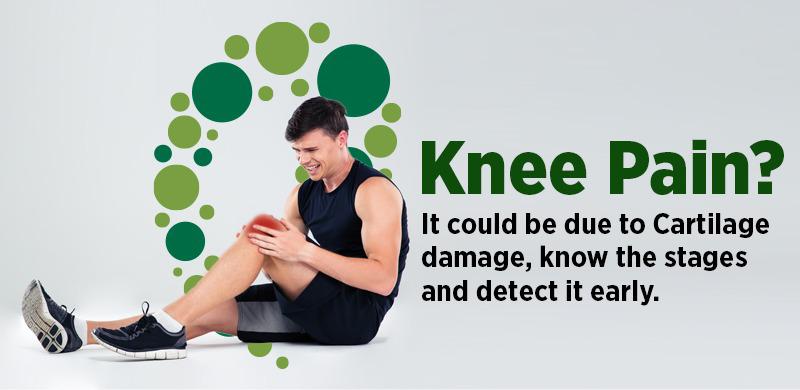© Copyright 2019. Regrow Biosciences Pvt Ltd. All Rights Reserved
Blog
© Copyright 2019. Regrow Biosciences Pvt Ltd. All Rights Reserved
Blog
Knee Pain? It could be due to Cartilage damage, know the stages and detect it early
26th December 2022

Irrespective of age, Knee Pain is a common complaint. An injury, such as a torn ligament or damaged cartilage, may lead to this condition. Diseases such as Arthritis, gout, and infections can also cause knee discomfort.
Most of the time it responds effectively to self-care techniques. Additional techniques for knee pain treatment include knee braces and physical therapy. However, occasionally, if there are chances of knee pain due to cartilage damage, cartilage surgery may be required for cartilage damage treatment. Swelling, stiffness, redness and warmth to the touch, instability or inability to fully straighten the knee are some of the symptoms.
a) ACL injury - People who play basketball, soccer, or other sports requiring quick changes in direction are more likely to sustain an ACL damage
b) Fractures - The knee's bones, particularly the patella, are susceptible to breaking in falls or auto accidents.
c) Torn meniscus - Between your shinbone and thighbone, there is a firm, rubbery cartilage called the meniscus that serves as a stress absorber which may tear through a sudden twist
d) Knee bursitis - Some knee injuries result in inflammation within bursae,
a) Loose body - A fragment of bone or cartilage may occasionally break off and float in the joint space due to damage or deterioration which may restrict the movement of the knee joints
b) Iliotibial band syndrome - This happens when the thighbone's outer surface is rubbed against by the iliotibial band, it is more common in cyclists and distance runners.
c) Dislocated kneecap - This happens when the patella slides out of position, usually to the outside of your knee.
d) Hip or foot pain - You can alter your gait to spare your painful joint if you experience foot or hip pain. However, this altered walk may put extra strain on your knees, leading to discomfort.
Smooth mobility is facilitated by the supple articular cartilage that covers your bones. Continuous wear and tear may lead to its tear leaving the bone surfaces exposed and hence resulting in friction in the joints.
a) Grade 0 – normal cartilage
b) Grade 1 – swelling of cartilage
c) Grade 2 – partial-thickness loss with fissures on the surface
d) Grade 3 – subchondral bone fissures
e) Grade 4 – visible subchondral bone
a) Unable to put weight on your knee or experiencing instability
b) Have knee swelling
c) Inability to fully extend or flex the knee
d) Observable deformity in the knee
e) Have a fever, with redness, pain and swelling in your knee
a) Maintain a healthy weight
b) Proper conditioning of the body while playing your sport
c) Become stronger and more flexible
d) Exercise wisely
Articular cartilage cannot regenerate or heal by itself, but the bone tissue beneath it can. Doctors encourage new growth by making tiny abrasions to the bone that lies beneath the affected cartilage. To perform this treatment the affected cartilage is removed and cells from the healthy cartilage are extracted, and cultured in the lab for few weeks, later these cultured cells are implanted at the damaged site. This process is also known as cartilage cell therapy.
There are numerous causes of knee pain, cartilage damage being one of the most common ones. We can prevent it by monitoring our weight and doing proper conditioning while playing our sport but even after that if the damage occurs, regeneration of the cartilage has been proven to be effective.